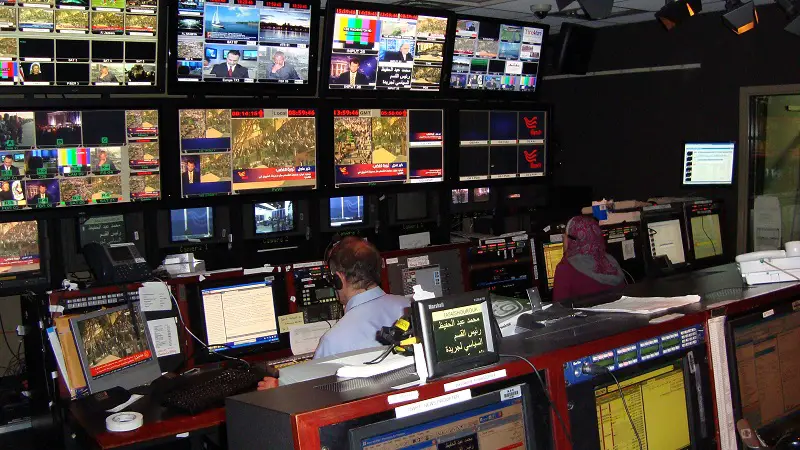Normative theories of communication are a group of four press theories proposed by Fred Siebert, Theodore Peterson and Wilbur Schramm together in their book called “Four Theories of the Press”.
The theories are also known as Western theories of mass media. The media does not exist in a vacuum and normative theories try to explain how the socio-political structures that surround the media affect its expected roles, freedoms and accountabilities. This theory explains how media systems behave when operated by different kinds of government in four different theories.
The theories do not give any kind of scientific predictions or explains them scientifically. They just provide explanation on the relationship of press in different parts of the world with their governments, ownership of press and how that kind of press affects audiences. The theory also talks about control and censorship of press.
[Related Reading: Agenda Setting Theory]

Concepts in Normative Theories of the Press
Media became competitive and yellow journalism developed in the nineteenth century. Media used sensationalism to attract people to use media like newspapers more. So, normative theories of press were developed to understand the use and responsibilities of media for general public through the relationship of media and governments.
These theories were made to clean media practices and guide the press. Accuracy and objectivity was taken to be the major improvement factors. These theories tell media how they should behave even though their philosophies are different.
Normative theory of press describes what role media takes in which kinds of government. It shows the ideal path to be taken by media, structures that media can adopt and operation of media.
Media must be clean and yellow journalism should be avoided in all the press theories in practice. Media must always be credible, truthful and reliable. Although very few countries have a media that falls under a clear category and there is often a mixture of two or more theories, understanding these theories can help us get the bigger picture of the effect of the environment in which media operates on it.
Types and Examples of Normative Theories of the Press
Authoritarian Theory
Authoritarian theory of press is the control of media with government, elites or authorities. Media is not allowed to criticize the powerful people or the government. There is censorship by government on criticisms and other things negatively portrayed about them.
Similarly, licensing of media, punishments and content approval are other means used to curb full freedom of press. Media is taken as a means to serve the interest of authorities and state. The reason given as to why it is done is “to achieve social order”.
The theory ignores needs of people and only establishes agendas and propaganda. There is limited freedom. The press in Bhutan can be taken as an example of authoritarian theory in practice.
Libertarian or Free Press Theory
Libertarian theory came in opposition to authoritarian theory. Press was given more freedom and people involved were taken to be conscience and intellectual. They were believed to possess the capability to find out truth from false. Public engagement was also started. People were given a lot of press freedom and there was little to no government control over press. “Laissez-faire” approach was used.

There were some restrictions in place for libel, false advertising and false news, but for the most part, media was different body rather than a part of the government. Media could criticize government and serve as gatekeepers or watchdogs for the society. It ignored privacy and worked for capitalism. An example of it was U.S. adopting it after the declaration of independence.
Social Responsibility Theory
In social responsibility theory, press is given freedom to publish anything but has to be responsible in its actions. The main role of press is to help preserve and growth of democracy. Guidelines and regulations make the press behave in a responsible manner. Government can censor if it deems some information to be inappropriate for democracy and social order.

Audience is also taken to be responsible in their understanding of things shown in media. Government can not intrude media as per its will. Media is taken to be a spokesperson of the poor and marginalized as well as provides diverse views/perspectives.
It ignores corporations using press for commercialization and profit. It is found in most European countries and other countries under European influence around the world nowadays.
Communist Theory
Communist theory is also known as the Soviet Theory as it came from the then Soviet Union after Russian Revolution of 1917. The main role of media in communist theory is to promote communism and achieve communist goals. The main representatives of communist power control the media. Information is controlled and is used to develop people’s skills and fulfill their basic needs.
The target population is the working class people. It is more liberal than authoritarian theory on information content in press. Media is self regulatory and there is no censorship. An example of this theory is how press functions in China.
Additions to Normative Theories of the Press
McQuail is another theorist who added two more theories to the four normative theories. One is Democratic-Participant Media Theory and the other is developmental media (development communication) theory. The first one talks about participation of audience in media. The second talks about media as a tool for development in local level.
Normative theories are based on different types of government systems. So, which one is good can not be measured by it. Media is important for states to survive and can be used in any way the government wants it to.
There are other theories that have emerged after the normative theories to better their aspects. Some of them are: Western concept (including both Libertarianism and Social Responsibility), Development Concept Theory, Revolutionary Concept Theory, Transitional Media Approach, etc.
